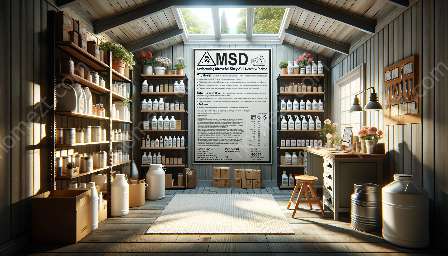Hazardous material spills can occur in various settings, posing a significant risk to human health and the environment. It is crucial to be prepared to respond to such incidents effectively, with a focus on safe storage of hazardous materials and home safety & security.
Hazardous Material Spills and Their Potential Impacts
Hazardous materials, such as chemicals, gases, and other substances, have the potential to cause serious harm if they are accidentally released into the environment. Spills can occur during transportation, storage, or industrial processes, and they may result in fires, explosions, and contamination of soil and water sources.
Safe Storage of Hazardous Materials
Proper storage of hazardous materials is a critical aspect of preventing spills and minimizing their impact. It is essential to store such materials in designated areas that are equipped with appropriate containment systems, such as spill pallets, secondary containment units, and chemical storage cabinets. These measures can help prevent leaks and contain spills, reducing the risk of exposure and environmental damage.
Key Considerations for Safe Storage:
- Compatibility: Store different hazardous materials separately to prevent dangerous chemical reactions.
- Liquid Management: Use appropriate storage containers and ensure proper handling to minimize the risk of spills.
- Emergency Equipment: Keep spill kits, personal protective equipment, and emergency response supplies readily available.
- Regulatory Compliance: Follow local, state, and federal regulations regarding the storage of hazardous materials to avoid legal issues and fines.
Emergency Responses for Hazardous Material Spills
When a hazardous material spill occurs, a swift and coordinated response is essential to minimize the impact on the environment and public health. Individuals should be prepared to take appropriate actions to protect themselves and others, and to mitigate the spread of the hazardous material.
Initial Steps in Response to a Hazardous Material Spill:
- Assess the Situation: Quickly determine the nature and extent of the spill, as well as any potential risks to health and safety.
- Notify Authorities: Contact emergency services, such as the fire department and hazardous materials response teams, to report the spill and seek professional assistance.
- Evacuation: If necessary, evacuate the immediate area to prevent exposure to hazardous fumes or substances.
- Personal Protection: Put on appropriate personal protective equipment, such as gloves, goggles, and respiratory protection, if safe to do so.
Containment and Cleanup Procedures:
Depending on the size and severity of the spill, specialized cleanup procedures may be required. Trained personnel should be engaged to contain the spill, mitigate its impact, and safely remove the hazardous material from the affected area. Proper decontamination measures should also be implemented to ensure the safe restoration of the environment.
Home Safety & Security
In addition to understanding emergency responses for hazardous material spills and safe storage of such materials, it is essential to prioritize home safety and security to mitigate potential risks.
Key Measures for Home Safety & Security:
- Proper Ventilation: Ensure adequate ventilation in areas where hazardous materials are stored to prevent the buildup of toxic fumes.
- Secure Storage: Keep hazardous materials out of reach of children and pets, and store them in designated, secure locations away from heat sources and ignition points.
- Education and Training: Educate household members about the potential hazards of certain materials and how to respond to spills or emergencies.
- Emergency Planning: Develop and practice emergency response plans for various scenarios, including hazardous material spills.
By integrating knowledge of emergency responses for hazardous material spills, safe storage practices, and home safety & security measures, individuals can better protect themselves, their families, and their communities. Being prepared and informed is key to effectively addressing the challenges associated with hazardous materials and ensuring a safer environment for all.



